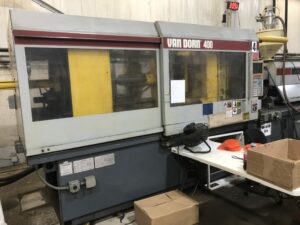An Overview Of Injection Molding’s Past
The injection molding process involves injecting molten plastic material into a mold to shape the object. This technique was first invented by Joseph Brahman in 1795. Up until 1820, it was only patented on paper. By 1894, this process evolved into the use of copper and brass alloys. In the 1930s, the injection molding process was finalized. Metal alloys have proven to be less suitable for injection molding than thermoplastic polymers. The process is now widely used by the plastic production industry.A Short Introduction to the Process of Injection Molding
This is how injection molding works step-by-step:- Plastic pellets or granules are first placed into a hopper, leading to an area known as the feed section.
- Within the feed section, these plastic granules are compressed. Frictional heat causes the granules to melt, forming a thick liquid known as a meld.
- An injector receives the meld from the feed section. This could be one of many different types of injectors. Some common injector types are screw-driven, piston-driven, manual, and hydraulic.
- When the injector is activated, molten material is injected into die cavities. When the liquid material expands inside the die, it takes the shape of the cavity. During cooling, the material settles and solidifies in the mold.
- When the die has cooled, die ejectors open it and the desired product is ejected.
What are the Steps Involved in the Process of Plastic Extrusion Machine Molding?
The process of extrusion molding proceeds as follows:- First, plastic powder or plastic granules are inserted into the feeder.
- A screw-thread pattern allows for even distribution of these granules from the feeder to the die. Heat jackets are applied to the outer casing of the feeder before it is headed. This heat causes the granules to melt into a thick, consistent liquid.
- An attached die has a small cavity in the desired shape at the end of the feeder. By pushing molten material through the die cavity, it is extruded from its end.
- With the cooling of the extruded part, the desired shape is formed and held.
Injection Molding vs Extrusion Molding:
- Manufacturing three-dimensional products are best done by injection molding, while manufacturing two-dimensional products are best done by extrusion molding.
- Compared to injection molding, extrusion is a relatively new plastic manufacturing process.
- By extruding, atypical cross-sections can be produced. Injection molding may require intricate dies to achieve the same result.
- The strength of injection-molded products is greater than that of extruded products.
- Due to the high cost of dies, injection molding is considered expensive. Nevertheless, it is the most widely used method due to its efficiency.




